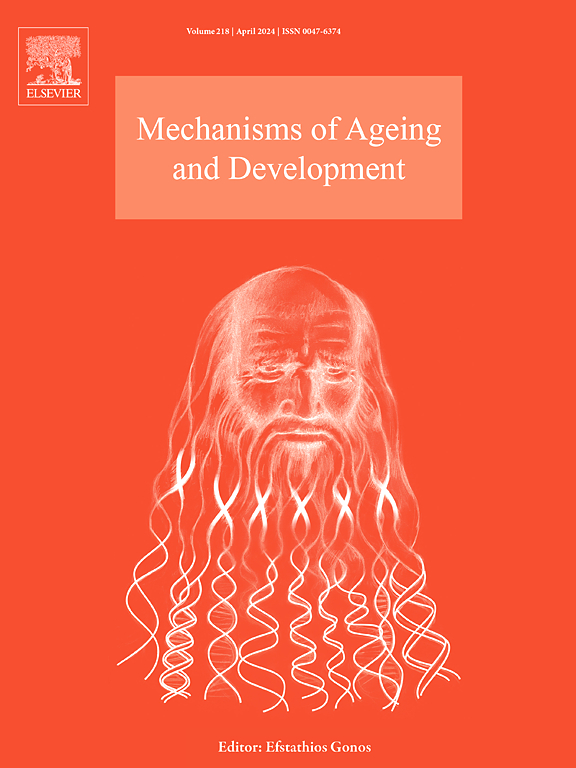ABI3BP deficiency alleviates Ang II-induced VSMC senescence through the Nrf2 signalling pathway
IF 5.1
3区 医学
Q2 CELL BIOLOGY
引用次数: 0
Abstract
Vascular aging is a critical independent risk factor for cardiovascular disease (CVD), yet its precise molecular mechanisms remain poorly understood. In this study, we generated an ABI3BP knockout mouse to investigate the role of ABI3BP deficiency in angiotensin II (Ang II)-induced vascular aging. The results demonstrated that ABI3BP was highly expressed in AngII-induced senescent vascular smooth muscle cell (VSMC) and vascular tissues, with significantly increased expression also observed in the blood vessels of naturally aged mice. Downregulation of ABI3BP expression using siRNA significantly inhibited Ang II-induced senescence of VSMC. ABI3BP knockout ameliorated Ang II-induced vascular aging in mice, reduced the secretion of senescence-associated inflammatory factors IL-6 and TNF-α, alleviated senescence-induced accumulation of collagen in the vascular media and thickening of the vascular intima, and effectively suppressed Ang II-induced elevation of blood pressure. Further investigations revealed that these protective effects might be mediated through enhanced expression of Nrf2 and its downstream anti-aging factors. Silencing Nrf2 with siRNA attenuated the protective effects of ABI3BP downregulation on vascular aging. Overall, these findings demonstrate that ABI3BP downregulation inhibits VSMC senescence by enhancing the activity of the Nrf2-mediated antioxidant defense pathway, thereby attenuating the progression of vascular aging.
ABI3BP缺失通过NRF2信号通路缓解angii诱导的VSMC衰老
血管老化是心血管疾病(CVD)的一个重要独立危险因素,但其确切的分子机制尚不清楚。在这项研究中,我们制造了一只ABI3BP敲除小鼠来研究ABI3BP缺乏在血管紧张素II (AngII)诱导的血管衰老中的作用。结果表明,ABI3BP在血管素诱导的衰老血管平滑肌细胞(VSMC)和血管组织中高表达,在自然衰老小鼠血管中的表达也显著增加。利用siRNA下调ABI3BP表达可显著抑制血管内皮细胞诱导的衰老。敲除ABI3BP可改善小鼠血管血管老化,减少衰老相关炎症因子IL-6和TNF-α的分泌,减轻衰老诱导的血管介质胶原堆积和血管内膜增厚,有效抑制血管内皮引起的血压升高。进一步的研究表明,这些保护作用可能是通过Nrf2及其下游抗衰老因子的表达增强介导的。用siRNA沉默Nrf2可减弱ABI3BP下调对血管衰老的保护作用。综上所述,这些研究结果表明,ABI3BP下调通过增强nrf2介导的抗氧化防御通路的活性来抑制VSMC衰老,从而减缓血管衰老的进程。
本文章由计算机程序翻译,如有差异,请以英文原文为准。
求助全文
约1分钟内获得全文
求助全文
来源期刊
CiteScore
11.10
自引率
1.90%
发文量
79
审稿时长
32 days
期刊介绍:
Mechanisms of Ageing and Development is a multidisciplinary journal aimed at revealing the molecular, biochemical and biological mechanisms that underlie the processes of aging and development in various species as well as of age-associated diseases. Emphasis is placed on investigations that delineate the contribution of macromolecular damage and cytotoxicity, genetic programs, epigenetics and genetic instability, mitochondrial function, alterations of metabolism and innovative anti-aging approaches. For all of the mentioned studies it is necessary to address the underlying mechanisms.
Mechanisms of Ageing and Development publishes original research, review and mini-review articles. The journal also publishes Special Issues that focus on emerging research areas. Special issues may include all types of articles following peered review. Proposals should be sent directly to the Editor-in-Chief.

 求助内容:
求助内容: 应助结果提醒方式:
应助结果提醒方式:


